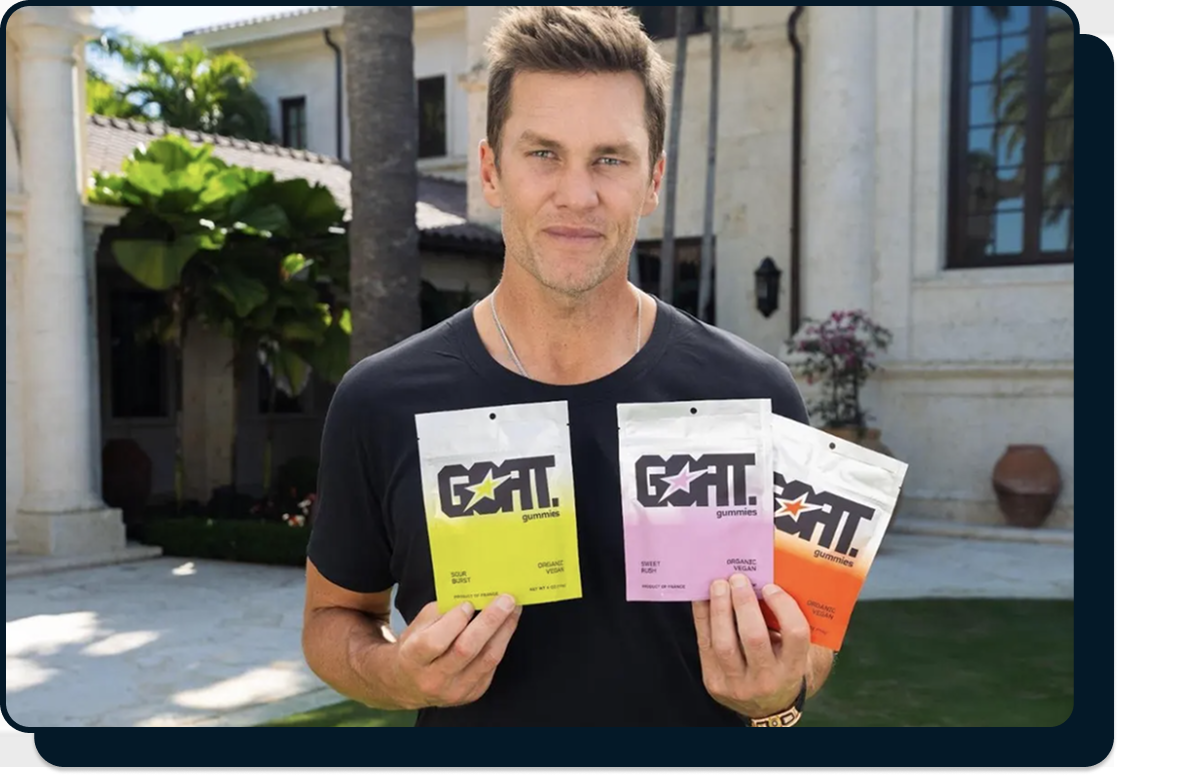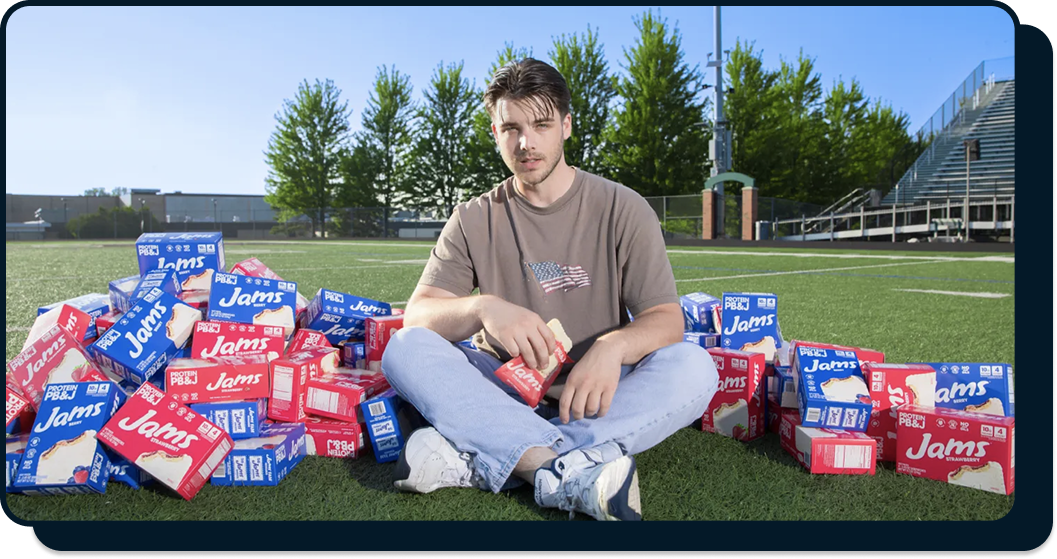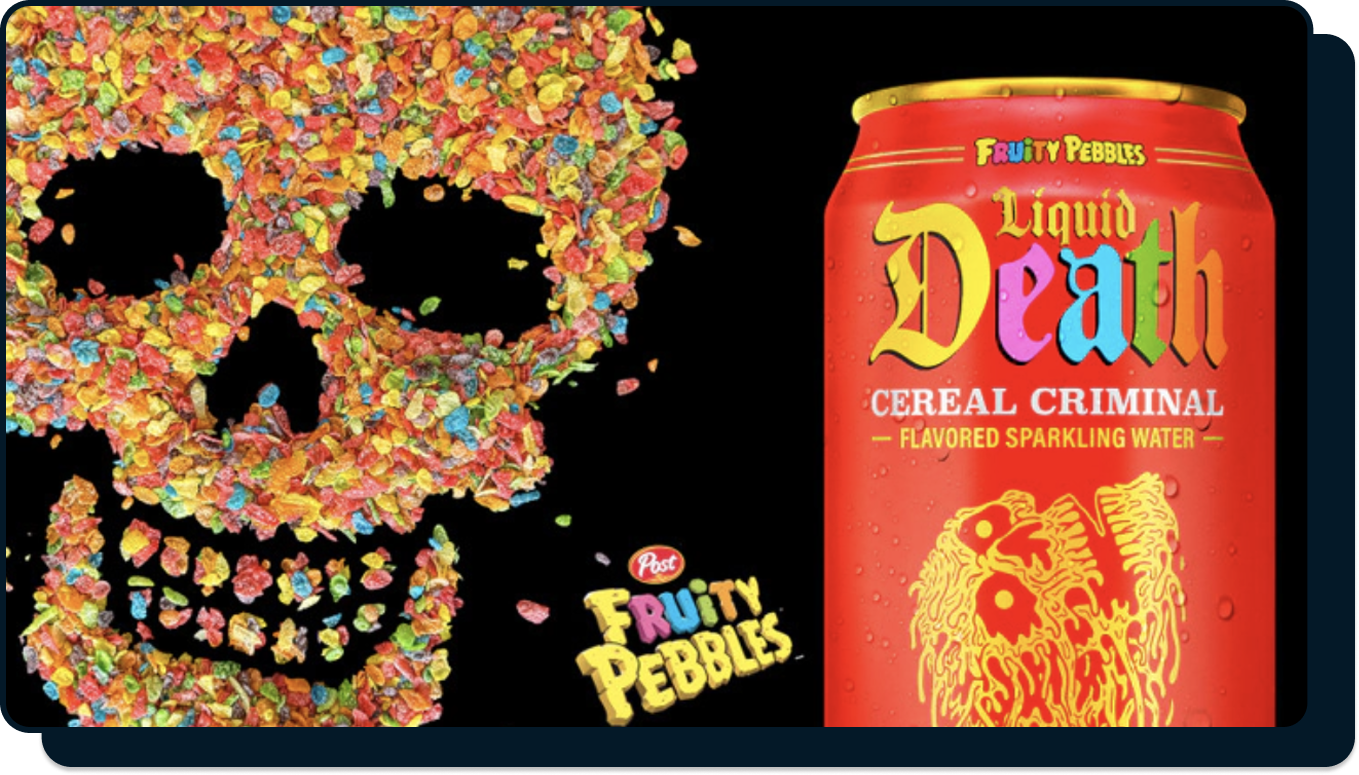
Hey Pies —
We were invited to this this month’s AI for Good summit in Geneva, where food finally took center stage of the AI convo. Most of the summit focused on using AI to transform global food systems — not just to boost output, but to reach more of the workforce and small business owners with real, ethical tech. The message was clear: innovation means nothing without an ethical tech focus impact forward balance.
Geneva is cute, and surrounded by quaint. You know we love a town! A big fact: Over 60% of consumers in diverse rural and regional communities express growing interest in authentic, heritage-based flavors and food experiences. You might find the next food trend in Arkansas, Lake Michigan towns, or rural Colombia over the global Michelin cities. More signals on this below.
Meanwhile, back in the consumer world, food is walking a curious line. We’re seeing brands try to balance health and hype, legacy and innovation. Let's just say: the results are wild. There’s cocoa-free chocolate made from grape seeds, banana coffee inspired by 1970s South Korea, and yes, a Fruity Pebbles–themed sparkling water that somehow avoids all the Red 40 while still leaning hard into nostalgia.
From global policy shifts to pop-culture pantry plays, here’s what’s rising, reforming, and redefining our consumption this week.


Dining Without the Destination Vibes
The Financial Times just made a bold claim: the best restaurant cities might be the ones no one’s flying in for.
In a piece celebrating the quiet brilliance of non-“foodie” cities, FT argues that the real culinary magic isn’t happening in Michelin-touring hotspots like Copenhagen. It’s in the places where food is part of daily life... not spectacle. These are cities where restaurants are built for locals, not global gourmands.
You will definitely find the next food trend in Arkansas, Lake Michigan towns, or rural Colombia over the global Michelin cities.
Think fewer foams and fermentations, more lunch spots that nail it every time. The article makes a strong case that restaurants rooted in simplicity, routine, and community are often more enjoyable than buzzy destinations designed to impress Instagram and World’s 50 Best voters.
In a food world obsessed with acclaim, it’s a reminder: consistency > clout. Sometimes, the best meal is one that feels like it was made for you — because it was.

GOAT Gummies: Tom Brady Enters Snacking
Retired NFL great Tom Brady has launched GOAT Gummies, an organic, vegan snack line made with real fruit. That kicked off with absolutely no artificial sweeteners, dyes or flavors.
Developed in partnership with Gopuff and a French manufacturer, each $4.99 pack delivers flavor-forward options like Sweet Rush (pear, mango, passion fruit, cherry), Sour Burst (tangerine, apricot, grapefruit), and Tropic Fusion (passion fruit, raspberry, pomegranate).
Brady says the mission was simple: “find things where you don’t sacrifice taste, but they’re better for you.” With real ingredients and wellness in the spotlight, it’s Brady’s bold new move from the field to the snack aisle. It is a sign of how sports celeb brands can merge health and craveability.
Jams: The New PB&J for Protein Fans
CNBC reports a new wave of athlete-backed innovation with Jams—protein-focused frozen PB&J sandwiches created by 26‑year‑old Connor Blakley and backed by stars like Alex Morgan and NFL’s CJ Stroud and Micah Parsons.
This isn’t just bedtime snack nostalgia—it’s a smart pivot toward higher-protein convenience, powered by athlete credibility and massive retail reach. Keep an eye on Jams—they could become the next lunchbox icon.

Banana Coffee: The Retro-Fresh Caffeine Fix
Borrowing from the global banana milk craze, banana coffee — a blend of ripe banana and coffee — is popping up at mom‑and‑pop cafes and big chains alike. Inspired by South Korea's iconic banana milk (launched in the 1970s to increase national milk consumption), the drink went viral on social media with BTS’s Jung Kook spotted sipping it and now, it's hitting coffee menus worldwide. Baristas are riffing with banana-cinnamon lattes, protein cold foams, cold brews with fermented banana and cedar milk, even banana purée and foam combos. Limited-edition Starbucks tests are in motion.
Why it’s catching on:
Whether you’re team banana coffee or skeptical, one thing’s clear: this nostalgic-flavored caffeine trend is more than a flash. It’s part of a broader shift toward playful, culturally-inspired coffee experiences.
Chocolate Reinvented: Cocoa-Free & Climate-Friendly
As cocoa prices surge—up over 40% in recent years—companies are racing to recreate chocolate without the bean. Enter Voyage Foods, now partnering with Cargill to scale a cocoa-free chocolate made from grape seeds, sunflower protein, cane sugar, and vegetable oils. Their product matches the taste and texture of mass-market chocolate and is about 50% cheaper, plus it has a smaller environmental footprint (less land, water, and emissions).
At the same time, ingredient giants like Ardent Mills (Cargill/Conagra) are offering blends replacing up to 25% of cocoa in baked goods. With traditional supply chains under climate and economic pressure—like West Africa’s plantations hit by disease and drought. Brands are turning to alt–chocolate for both cost and sustainability.
Consumers are warming to the idea: 75% say they’d try more sustainable chocolate alternatives. Still, taste remains king. Expect cocoa-free chocolate chips and candy coatings to quietly show up in baked goods and snacks — tasting familiar but made without the bean.

Fruity Pebbles, But Make It Death Water
Liquid Death just launched a Fruity Pebbles–flavored sparkling water in partnership with Post — and it’s not nearly as unhinged as it sounds… at least on the label. The ingredients are actually pretty tame: carbonated water, agave syrup, natural flavors, citric acid, and stevia. No Red 40, no high-fructose drama. We are wondering if the water will be murky throw up color like Fruity's milk,
But here’s the twist: while the drink keeps it clean, the source material — the cereal itself — is still a chemical fever dream. Fruity Pebbles is packed with artificial dyes and additives that many brands are actively phasing out. Post, notably, hasn’t joined that movement yet.
So yes, the water’s ingredient list plays it straight (we see you "natural flavors"), but the collab is still deeply ironic. A health-halo beverage channeling one of the most artificial cereals on the shelf? It’s clean-label cosplay — and a reminder that branding, not just ingredients, is what sells.
AI for Good Food
This year’s AI for Good Global Summit, the platform for using artificial intelligence to tackle global challenges, just wrapped in Geneva. And the shift to more food x AI is continuing to rise.
Among the panels:
Why it matters: Over 700 million people globally face food insecurity. The new Global Initiative on AI for Food Systems Transformation aims to change that by making AI actually work for smallholder farmers, not just pitch decks. The goal is tech that’s ethical, accessible, and farmer-first.
We all stressed the need for inclusive frameworks, cross-agency partnerships, and AI tools that help rural producers grow, distribute, and thrive. It’s not just about better yields. It’s about interoperability, equity, and finally bringing smart ag to the value chain.
The subtext? If AI is going to claim it can fix global hunger, it better show up where it counts: not in a TED Talk, but in the field.

Kraft Heinz is reportedly weighing a major structural overhaul: spinning off its grocery/processed‑food arm into a separate ~$20 billion business, while refocusing the remaining unit on high‑margin sauces and condiments like Heinz ketchup and Grey Poupon. And it's clear they also need a culture reset.
This reflects a broader consumer shift away from heavily processed foods toward fresher, cleaner options — sauces still hold strong, but brands like Lunchables and Oscar Mayer are on the back foot.
If executed well, this split could unlock value — the sauces unit may fetch a premium multiple, while the grocery division sheds debt and gains flexibility. But key hurdles remain: managing $15–20 billion in debt, navigating regulatory reviews, and ensuring both entities can thrive post‑separation.
Why it matters: This isn’t just corporate housekeeping — it’s a strategic bet that chewy, shelf‑stable staples are fading, while clean‑label, condiment‑centered brands could offer new growth. Next test: Q2 earnings on July 30 — investors will be watching margins, spinoff clarity, and debt plans closely.
And, perhaps, the team in Chicago needs a little more time with their counterparts in Brazil.
Got a trend tip or a launch worth watching? Hit reply.
Eat well. Build smart.
— Journey Team
For more insights and updates, follow us on social media or visit our website at Journey Foods.
*Disclaimer: Our newsletters and blogs are focused on trends, callouts, engagement testing, and true impact. We do not take money from brands for our newsletters.
